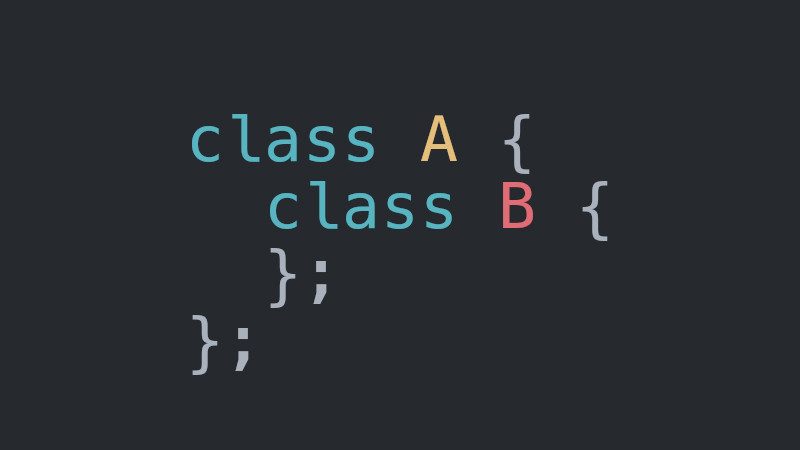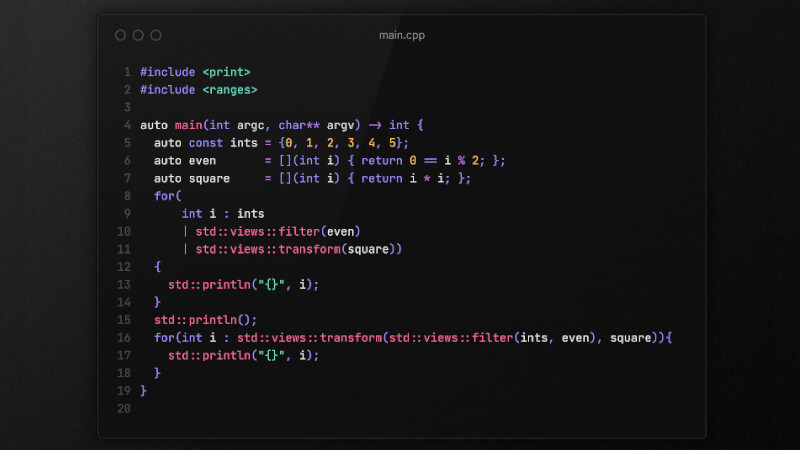
In C++ a class can be declared within the scope of another class, this practice is known as: “nested classes”.
Nested classes are considered to be within the scope of the enclosing class and are available for use within that scope. To refer to a nested class from a scope other than its immediate enclosing scope, you must use a fully qualified name.
Basic example of use
See this example, where class B is inside class A. We can either create the object of class A or also create an object of class B using the scope resolution of class A.
#include <iostream>
class A {
public:
class B {
public:
B(){}
void print(){
std::cout << "I am B\n";
}
};
};
int main(){
A::B b;
b.print();
}
Members and member functions are interchangeable between these two classes, and they can be overloaded. For example, if we had a member function of the same name and type in A, I could use it without any problem:
#include <iostream>
class A {
public:
void print(){
std::cout << "I am A\n";
}
class B {
public:
B(){}
void print(){
std::cout << "I am B\n";
}
};
};
int main(){
A a;
a.print();
A::B b;
b.print();
}
And of course, access privileges also remain, if one of these member functions were private, the non-access rule remains.
Why use nested classes?
The main reason for using nested classes is precisely because it hides data, that is, do you know those public APIs where you can instantiate a class through a URL? So, they make use of nested classes, and of course, with all data protection measures too, in addition to not polluting the namespace.
For more information about nested classes visit:
- https://en.cppreference.com/w/cpp/language/nested_types
- https://learn.microsoft.com/en-us/cpp/cpp/nested-class-declarations?view=msvc-170




